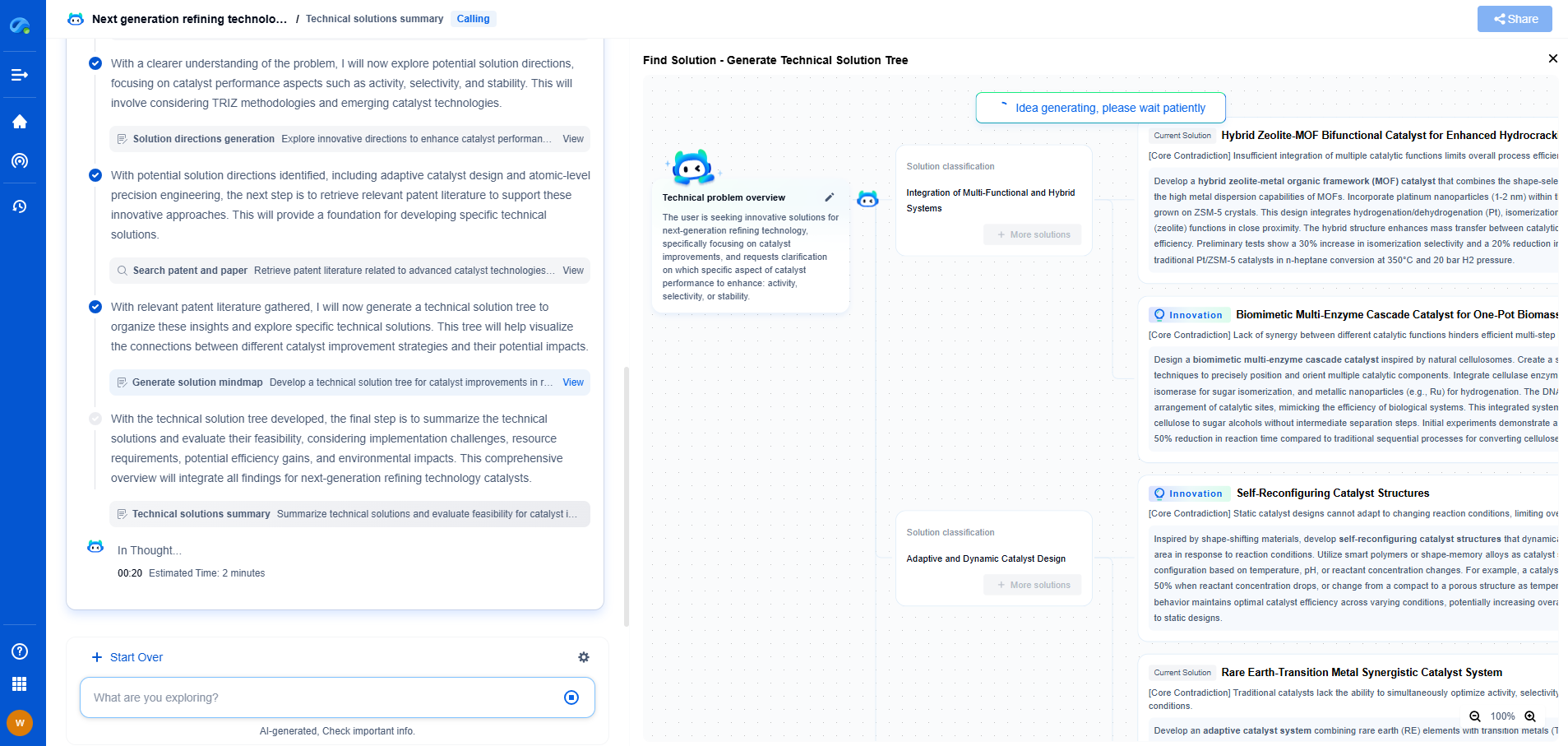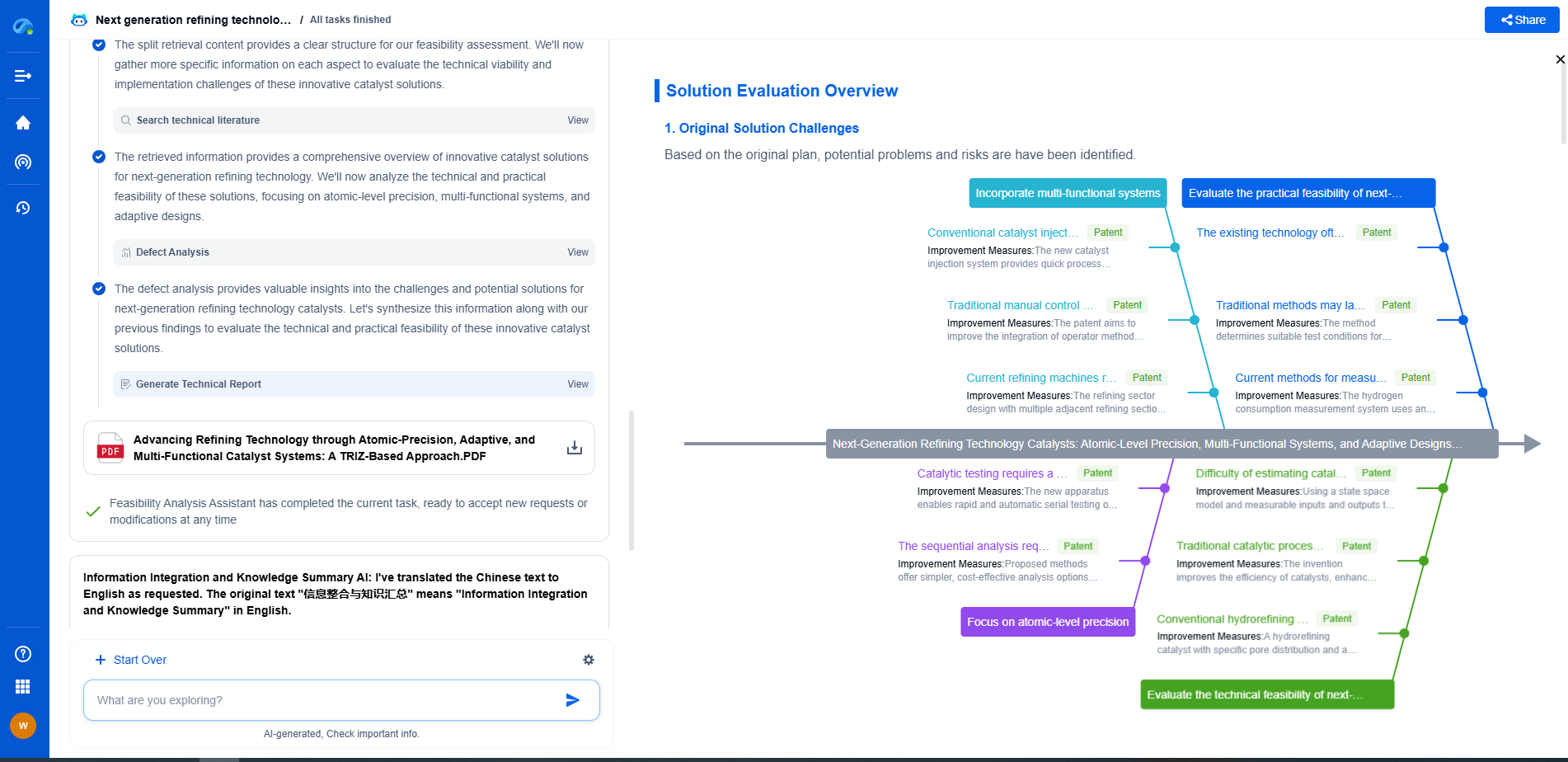ISO vs. DOT Cylinder Standards: Global Market Access Strategies
JUL 21, 2025 |
In today’s globalized world, navigating international product standards is crucial for businesses aiming to expand their market presence. One important area where this is evident is in the standards governing gas cylinders. The ISO (International Organization for Standardization) and DOT (Department of Transportation) standards are two significant regulatory frameworks that govern the manufacture and distribution of gas cylinders. Understanding their differences and aligning your business strategies accordingly can be pivotal for successful global market access.
The Basics of ISO and DOT Standards
ISO standards are internationally recognized guidelines that provide specifications for products, services, and systems to ensure quality, safety, and efficiency. When it comes to gas cylinders, ISO standards cover a wide range of parameters, including material specifications, design, testing, and manufacturing processes. These standards are widely adopted in many countries, promoting consistency in product quality across international borders.
On the other hand, DOT standards are specific to the United States and are enforced by the Department of Transportation. These regulations are mandatory for products used within the U.S. market and emphasize safety and reliability. DOT standards for cylinders include specifications for design, manufacturing, testing, and maintenance, ensuring that the cylinders are safe for transporting hazardous materials.
Key Differences Between ISO and DOT Standards
While both ISO and DOT standards aim to ensure safety and reliability, there are notable differences in their requirements. ISO standards often provide broader guidelines that can be adapted to different regions, while DOT standards are more prescriptive with specific requirements tailored to the U.S. context. For instance, DOT standards may have more stringent testing protocols and additional safety checks compared to ISO standards.
Another key difference lies in the approval processes. DOT standards require certification and approval by specific U.S. agencies, whereas ISO standards are more focused on compliance through adherence to international specifications. Understanding these differences is crucial for companies looking to distribute products in the U.S. and other global markets.
Global Market Access Strategies
To successfully access global markets, businesses need to develop strategies that accommodate both ISO and DOT standards. Here are some strategies that can help:
1. Dual Certification: One effective strategy is to design cylinders that meet both ISO and DOT standards. This dual certification approach allows companies to cater to multiple markets without the need for separate production lines, thus reducing costs and increasing efficiency.
2. Market Research: Conduct thorough market research to understand the specific requirements and preferences of target markets. This information will guide product design and development, ensuring compliance with local standards and increasing market acceptance.
3. Collaboration with Local Experts: Partnering with local experts and regulatory bodies can provide valuable insights into compliance requirements. Local partners can assist in navigating the certification process, ensuring that products meet all necessary standards and regulations.
4. Continuous Monitoring and Adaptation: Global standards and regulations are constantly evolving. Businesses must stay updated with any changes in ISO and DOT standards to ensure ongoing compliance. This requires a proactive approach to monitoring regulatory developments and adapting business strategies accordingly.
The Role of Technology and Innovation
Technology plays a crucial role in bridging the gap between ISO and DOT standards. Advanced manufacturing technologies, such as computer-aided design and precision engineering, enable the production of cylinders that meet diverse regulatory requirements. Additionally, innovations in materials science and testing methods contribute to enhanced safety and compliance.
By leveraging technology, businesses can streamline their production processes, improve product quality, and reduce the time and cost associated with compliance. This not only facilitates easier market access but also enhances the overall competitiveness of the product in the global market.
Conclusion: Navigating the Path to Global Compliance
In the global marketplace, understanding and aligning with ISO and DOT cylinder standards is essential for expanding business operations. By recognizing the differences between these standards and implementing effective market access strategies, companies can ensure compliance, enhance product quality, and successfully penetrate both domestic and international markets. As regulations and technologies continue to evolve, businesses must remain agile, continuously adapting to the changing landscape of global standards.
As clean energy and decarbonization drive new breakthroughs in hydrogen storage, CO₂ transport, and alternative gas carriers, keeping pace with technical trends and patent activity is critical to staying competitive.
Patsnap Eureka helps innovators in compressed gas storage, high-pressure tank design, gas sensor systems, and pipeline materials accelerate research by offering instant, AI-powered insights into global patents, related technologies, and emerging white spaces.
🚀 Bring speed, precision, and strategic foresight to your innovation and IP decision-making in the gas transport sector—try Eureka today and unlock a smarter path forward.
- R&D
- Intellectual Property
- Life Sciences
- Materials
- Tech Scout
- Unparalleled Data Quality
- Higher Quality Content
- 60% Fewer Hallucinations
Browse by: Latest US Patents, China's latest patents, Technical Efficacy Thesaurus, Application Domain, Technology Topic, Popular Technical Reports.
© 2025 PatSnap. All rights reserved.Legal|Privacy policy|Modern Slavery Act Transparency Statement|Sitemap|About US| Contact US: help@patsnap.com

